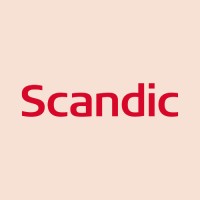
Scandic Hotels Company Cyber Security Posture
scandichotelsgroup.comScandic is the largest hotel company in the Nordic countries with a network of about 280 hotels with 58,000 rooms in operation and under development, in more than 130 destinations. The company is the leader when it comes to integrating sustainability in all operations and its award-winning Design for All concept ensures that Scandic hotels are accessible to everyone. Well loved by guests and employees, the Scandic Friends loyalty program is the largest in the Nordic hotel industry and the company is one of the most attractive employers in the region. Scandic is listed on Nasdaq Stockholm. Get to know Scandic: www.scandichotelsgroup.com
Scandic Hotels Company Details
scandic-hotels
10,001+ employees
0
721
Hospitality
scandichotelsgroup.com
Scan still pending
SCA_1986180
In-progress
Between 900 and 1000
This score is AI-generated and less favored by cyber insurers, who prefer the TPRM score.
 Scandic Hotels Global Score
Scandic Hotels Global Score.png)

Scandic Hotels Company Scoring based on AI Models
| Model Name | Date | Description | Current Score Difference | Score |
|---|---|---|---|---|
| AVERAGE-Industry | 03-12-2025 | This score represents the average cybersecurity rating of companies already scanned within the same industry. It provides a benchmark to compare an individual company's security posture against its industry peers. | N/A | Between 900 and 1000 |
Scandic Hotels Company Cyber Security News & History
| Entity | Type | Severity | Impact | Seen | Url ID | Details | View |
|---|
Scandic Hotels Company Subsidiaries

Scandic is the largest hotel company in the Nordic countries with a network of about 280 hotels with 58,000 rooms in operation and under development, in more than 130 destinations. The company is the leader when it comes to integrating sustainability in all operations and its award-winning Design for All concept ensures that Scandic hotels are accessible to everyone. Well loved by guests and employees, the Scandic Friends loyalty program is the largest in the Nordic hotel industry and the company is one of the most attractive employers in the region. Scandic is listed on Nasdaq Stockholm. Get to know Scandic: www.scandichotelsgroup.com
Access Data Using Our API

Get company history
.png)
Scandic Hotels Cyber Security News
Scandic Hotels Group’s net profit surges to $102.81m in 2023
Scandic's operating profit for the reported year came in at Skr2.78bn, up from Skr2.45bn in FY 2022. GlobalData Strategic Intelligence. US ...
Inside a Ransomware Hit at Nordic Choice Hotels
A hotel employee thought the message was legitimate and clicked on a malicious link, she said. Hackers then took out most of the hotelier's ...
NCC receives $188m contract to build Scandic hotel in Denmark
Nordic construction contractor NCC has signed an agreement with Bassin 7 Erhverv ApS to construct a Scandic hotel on Aarhus Island in Denmark.
Hotel brands: All in a name
Hotel companies continue to expand while busily launching new brands. But is this a good thing for guests, asks Tom Otley.
A Security Expert Tied to WikiLeaks Vanishes, and the Internet Is Abuzz (Published 2018)
On Twitter, WikiLeaks described Mr. Kamphuis as an “associate” of Julian Assange, the group's founder. Mr. Assange has lived for years in the ...
Scandic Hotels Group net sales grow 7.9% in Q2 2023
Scandic Hotels Group net sales grow 7.9% in Q2 2023. Average occupancy rate during the quarter stood at 63%, versus 63.2% in Q2 2022. ... Scandic ...
Scandic to expand in Finland with new 138-room hotel
Scandic has announced the development of a new Scandic Go hotel in Turku, Finland, expanding its brand's presence in the country.
Scandic Hotels announces rebrand of Helsinki Holiday Inn
Scandic Hotels has signed a long-term deal with property landlord Exilion to extend an existing agreement and undertake the rebranding of ...

Scandic Hotels Similar Companies
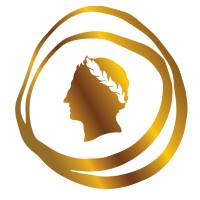
Caesars Entertainment
Caesars Entertainment, Inc. is the largest casino-entertainment Company in the U.S. and one of the world's most diversified casino-entertainment providers. Since its beginning in Reno, NV, in 1937, Caesars Entertainment, Inc. has grown through development of new resorts, expansions and acquisitions.

J D Wetherspoon
J D Wetherspoon is a leading pub operator in the UK and Ireland. Back in 1979, founder chairman Tim Martin opened the very first Wetherspoon – in Muswell Hill, north London. Today, Tim and the company run over 850 pubs and hotels, spread right across the UK and, more recently, Ireland. During its hi

Country Club
Country Club India Ltd is one of the fastest growing entertainment and leisure conglomerate in India. A Multi-Million dollar entity and a listed company on BSE (Bombay Stock Exchange), CCIL is a pioneer in the concept of family clubbing in the country. CCIL has established 205 properties of which 50
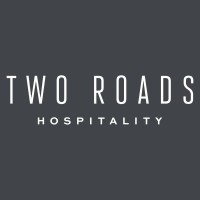
Two Roads Hospitality
Founded in 2016, Two Roads Hotels is an international lifestyle hotel company that manages and operates the Alila Hotels & Resorts, Destination Hotels, Joie de Vivre Hotels, Thompson Hotels, and tommie Hotels brands. At Two Roads, we create extraordinary experiences for those unafraid to break f
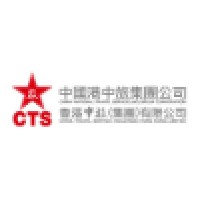
China National Travel Service (HK) Group Corporation
The China Travel Service (Holdings) Limited is the backbone of the state-owned enterprise directly supervise by Central government. It is also the largest travel corporation in China and was established in April 1928 by Chinese banker Chen Guangfu. From generation to generation, it is now a large st
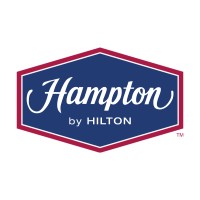
Hampton
The Hampton brand, including Hampton Inn, Hampton Inn & Suites and Hampton by Hilton, is an award-winning leader in the upper-midscale hotel segment. With more than 2,700 properties in 32 countries globally, Hampton is part of Hilton Worldwide, the leading global hospitality company. All Hampton Hot

Frequently Asked Questions
Explore insights on cybersecurity incidents, risk posture, and Rankiteo's assessments.
Scandic Hotels CyberSecurity History Information
How many cyber incidents has Scandic Hotels faced?
Total Incidents: According to Rankiteo, Scandic Hotels has faced 0 incidents in the past.
What types of cybersecurity incidents have occurred at Scandic Hotels?
Incident Types: The types of cybersecurity incidents that have occurred include .
Incident Details
What are the most common types of attacks the company has faced?
Additional Questions
What Do We Measure?
















Every week, Rankiteo analyzes billions of signals to give organizations a sharper, faster view of emerging risks. With deeper, more actionable intelligence at their fingertips, security teams can outpace threat actors, respond instantly to Zero-Day attacks, and dramatically shrink their risk exposure window.
These are some of the factors we use to calculate the overall score:
Identify exposed access points, detect misconfigured SSL certificates, and uncover vulnerabilities across the network infrastructure.
Gain visibility into the software components used within an organization to detect vulnerabilities, manage risk, and ensure supply chain security.
Monitor and manage all IT assets and their configurations to ensure accurate, real-time visibility across the company's technology environment.
Leverage real-time insights on active threats, malware campaigns, and emerging vulnerabilities to proactively defend against evolving cyberattacks.




